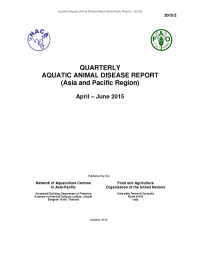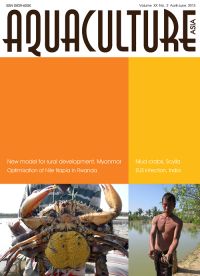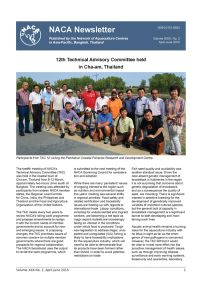In this issue:
Anti-microbials and alternatives. Successful demonstration of new model for rural development in Myanmar. Optimisation of Nile tilapia (Oreochromis niloticus) production in ponds based on improved farm management practices in Rwanda. EUS infection in freshwater fishes of Andhra Pradesh. Development of pond-reared broodstock / spawners of green mud crab Scylla serrata. ASEAN Gender Network launched. A two-tube nested PCR detection method for AHPND bacteria. 9th Regional Grouper Hatchery Production Training Course.
In this issue:
12th Technical Advisory Committee held in Cha-am, Thailand. Audio recordings: WAS special session on regional cooperation for improved biosecurity. AFSPAN Final Technical Report now available! Pillay Aquaculture Foundation Awards for Scientists in Least Developed Countries. Gender seminar conducted and ASEAN Gender Network launched. A two-tube, nested PCR detection method for AHPND bacteria. 9th Regional Grouper Hatchery Production Training Course. Developing an environmental monitoring system to strengthen fisheries and aquaculture in the Lower Mekong Basin. Asia-Pacific Regional Workshop on the Status of Aquatic Genetic Resources for Food and Agriculture.
Brett Herbert introduces the special session with a presentation on biosecurity and regional cooperation.
Transboundary aquatic animal diseases are one of the major concerns for strengthening of aquatic animal health management capacity in the region. The spread of these diseases demonstrates the vulnerability of the aquaculture industry, as well as the wild fish populations, to disease emergence where impacts have been exacerbated by the lack of preparedness. NACA's Aquatic Animal Health Programme, established in 1998, provides a mechanism for regional governments to coordinate disease preparedness, surveillance and response.


